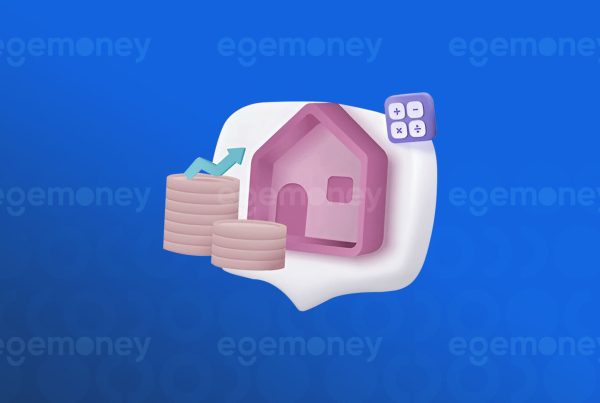
Simply put, an “airdrop” refers to the free distribution of cryptocurrency to a large number of people. It is often used as a marketing strategy by blockchain projects or cryptocurrency companies to create or increase awareness, promote adoption, and distribute tokens to a broad audience.
During an airdrop, cryptocurrencies like Bitcoin or Ethereum are distributed to the owners of a specific cryptocurrency or to individuals who meet certain criteria set by the project. These criteria could include being an existing token holder, joining a specific community, or completing certain tasks or actions.
Apart from completing specific actions and tasks, airdrops can take various forms, such as direct distribution of cryptocurrencies to suitable wallets, signing up for the airdrop, sharing on social media, or inviting others. Additionally, the amount distributed during the airdrop can vary significantly depending on the project and its objectives.
How Does Airdrop Work?
The first step to initiate an airdrop is planning the project. The blockchain and cryptocurrency team behind the project sets the goals of the airdrop, plans the distribution strategy, defines eligibility criteria, and decides on the amount to be distributed. Then, a designated amount is allocated for distribution among the participants.
The project announces the upcoming airdrop through various channels such as social media, forums, newsletters, or specialized airdrop platforms. The criteria and requirements are explained in detail. Interested individuals then register to participate in the project.
The project verifies the eligibility of the participants based on predefined criteria. This step ensures that only qualified individuals receive the airdropped tokens. After verification, the project distributes the tokens to the accepted participants. Distribution can be done in various ways depending on the technical infrastructure of the project. Tokens can be sent directly to the participants’ wallets, or an automated smart contract can be used to facilitate the process.
After the distribution, the project continues to provide updates, incentives for ongoing participation, or fosters community engagement to encourage participants to remain involved.
What Are the Types of Airdrops?
In the cryptocurrency space, there are two types of airdrops: Coin airdrops and NFT airdrops. Coin airdrops involve the distribution of cryptocurrencies, while NFT airdrops involve the distribution of NFTs (Non-Fungible Tokens). These two types can be further categorized into four categories based on the applied method:
- Reward Airdrops: Participants are required to complete tasks such as sharing on social media or tagging friends in a post to be eligible for reward airdrops.
- Standard Airdrops: Participants can join standard airdrops by providing their names, email addresses, or other basic information. The goal is usually to build a broad user network.
- Token Holder Airdrops: Token holder airdrops require participants to hold a certain cryptocurrency in their wallets to be eligible. These airdrops target wallets that hold popular cryptocurrencies like Bitcoin (BTC) or Ethereum (ETH), which have significant communities in the crypto ecosystem.
- Private Airdrops: Private airdrops are a type of airdrop where the distribution is limited to specific wallets. Projects often use private airdrops to reward token holders or specific groups of participants.
The Crypto Airdrop Process
As mentioned earlier, the crypto airdrop process involves specific stages. In short, the project announces the details, criteria, and amount of the airdrop to be distributed. Individuals then register based on the given criteria and become part of the project team’s approval process. Winners are then rewarded with the specified amount via their digital wallets.
What is the Difference Between Airdrop and ICO?
ICOs (Initial Coin Offerings) are fundraising events for new cryptocurrency projects. Unlike airdrops, participation in ICOs is not free. ICOs offer participants the opportunity to get involved with promising cryptocurrencies at an early stage. On the other hand, airdrops are a free marketing method aimed at increasing awareness and encouraging participation in the ICO to have a strong market entry.
Requirements for Participating in Airdrops
Participating in airdrops is relatively easy, but there are specific requirements and conditions that may vary from project to project.
First, you need to have a compatible cryptocurrency wallet to receive the airdropped tokens and participate in the airdrop.
You should understand which of the four types mentioned earlier the specific airdrop falls under and evaluate the participation requirements accordingly. For instance, an airdrop may require you to hold a specific amount of a certain cryptocurrency in your wallet or complete tasks on social media.
Finally, register for the airdrop. You can usually find the registration link on the project’s official social media accounts or website.
How to Protect Yourself from Airdrop Scams
Although airdrops may seem like an easy way to make money, they can also be a playground for scammers. Phishing attacks are common in the crypto space, where attackers use fake email addresses to send users to malicious websites that can compromise their wallets. To avoid falling victim to such scams, ensure that you are dealing with the official social media account of the project and only click on links provided in verified posts. If you are unsure, visit the project’s official website to check if there are any airdrop campaigns being promoted. Legitimate airdrops will never ask for significant personal information or account details and will not require you to send funds to participate.
Taxes and Crypto Airdrops
The taxation of crypto airdrops can vary depending on jurisdiction and specific tax laws. In some countries, cryptocurrencies and gains from airdrops are subject to income tax.
Advantages and Disadvantages of Crypto Airdrops
Airdrops are an effective marketing tool to create awareness about a new cryptocurrency project or token and help build a strong community around it. Airdropped tokens are more likely to be held and supported actively by participants, who may also spread the word and contribute to the project’s growth. Additionally, airdrops allow for a wider distribution of tokens instead of concentrating them in the hands of a few early investors.
On the other hand, airdrops may attract participants who are only interested in getting free tokens and not necessarily supporting the project. This can lead to wasted costs for the project. Moreover, a sudden influx of airdropped tokens into the market after distribution can cause price volatility and negatively affect the token’s value.
First Crypto Airdrop Ever
The first-ever crypto airdrop was carried out by a cryptocurrency called Auroracoin in Iceland in March 2014. Auroracoin distributed 50% of its total coins to Icelandic residents. Each resident who registered with their ID received 31.8 AUR.
What is NFT Airdrop?
An NFT airdrop involves the free distribution of NFTs (Non-Fungible Tokens) to individuals. It is used as a promotional strategy by projects to raise awareness, engage with the community, or reward token holders. Participants receive NFTs directly to their digital wallets, allowing them to own unique digital assets like art pieces or collectibles, and enabling them to trade these assets.
How to Find Crypto Airdrops?
Some websites list ongoing crypto airdrops. These platforms provide information about airdrop eligibility requirements and registration links. Participating in crypto forums, social media groups, and online communities can also be a valuable source of information on upcoming airdrops. Additionally, following the official websites and social media accounts of blockchain projects can help you stay informed about airdrop campaigns.
Can You Make Money from Crypto Airdrops?
While airdrops offer a way to obtain free tokens, the potential for profit depends on various factors, including the current market value of the tokens received, your strategy after obtaining the tokens, and the market conditions. While some participants have made money from airdrops in the past, there is no guarantee of profitability. Airdrops should be seen as an opportunity to acquire tokens for free, but careful research, evaluation of market conditions, and making informed decisions are essential.







